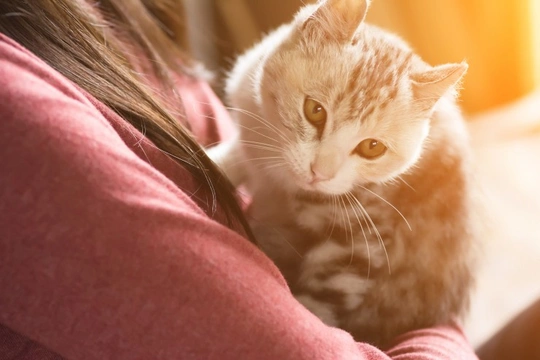
Should pregnant women with cats be wary of toxoplasmosis?
One very commonly widespread and shared piece of wisdom in the past used to be that pregnant women should not have anything to do with cats, due to the risk of toxoplasmosis, which can harm the unborn baby. Over the course of history, this has led to large numbers of cats being rehomed or surrendered to shelters if their owner gets pregnant, due to the perceived risk of owning a cat while also carrying a child.
Even today, many people still believe that pregnant women should not own or touch cats or have anything to do with cats, but what is the truth of the matter? Can cats pose a real risk of toxoplasmosis to pregnant women, and if so, what can be done about it? Read on to learn more.
What is toxoplasmosis?
Toxoplasmosis is the name given to a condition that is caused by the parasite Toxoplasma gondii, which can often be carried by adult humans with no symptoms or ill effects. Even in cases where the presence of the parasite does lead to illness, this is usually very mild, but can lead to enlarged lymph nodes and flu-like symptoms that can, in some cases, persist for several weeks.
Generally, the condition only causes issues in people with a weak immune system; but in the case of pregnant women, infection with toxoplasmosis can be passed onto the unborn child and lead to a condition called congenital toxoplasmosis.
To put the condition into perspective, around a quarter of the UK population carries the parasite at any given time, and ill effects or problems due to this are very rare.
Where do cats come into it?
The Toxoplasma gondii parasite can be spread by a variety of different methods, and the most common of these comes from eating meat that is not properly cooked. Cats can also carry the parasite and so, pass it onto other cats and people in their faeces, and they can also spread it to other cats when mating.
The condition is also blood-borne, meaning that there is a small risk of passing on the condition as the result of blood transfusions too.
The first known case of toxoplasmosis in cats didn’t occur until the 1940’s, when it was found to be carried both in the faeces of a cat and also in the environment, where it can remain infectious for up to one year.
There are no definitive figures for how many cats in the UK carry the parasite, but it is thought (based on survey evidence) to be anywhere between 18%-80%, which is of course a very wide range and potentially, means the majority of the UK cat population.
The parasite is vastly more likely to be present in wild and feral cats that catch their own prey, as they can contract the condition from other animals-which also means that domestic cats that hunt a lot also have a higher chance of becoming a carrier.
However, even if the larger proportion of cats carries the parasite, they are likely to only be infective with it for a couple of weeks in their entire lives, as the oocysts that are responsible for spreading the parasite are only shed by infected cats once or twice in their lifetimes.
That being said, a cat that is shedding oocysts will shed millions of them during their period of infectivity, and these can survive in the environment and continue to spread for several months at a time.
There is currently no vaccine to prevent cats contracting or passing on the parasite to either other cats or humans.
Why is toxoplasmosis a risk to pregnant women?
It is thought that a significant percentage of pregnant women carry the toxoplasmosis parasite with absolutely no ill effects to either themselves or their child; however, in rare cases, the condition can harm the unborn foetus by infecting them with congenital toxoplasmosis, which can lead to a wide range of problems.
Infected babies may be fine at birth or potentially showing signs of illness, and the condition tends to present within the first six months of the baby’s life. It can cause a wide range of potential problems such as premature delivery, low birth weight, mental and physical disabilities and a whole plethora of other potentially serious conditions that are likely to be challenging and life-changing for the parents and their child.
While congenital toxoplasmosis is very rare, it is also very serious, and this should not be overlooked.
How much of a risk are cats to pregnant women?
Because toxoplasmosis can lead to a range of potentially severe and serious problems in children born with congenital toxoplasmosis, information on the condition and the routes of transmission (including via cat faeces) are made clear to women who are pregnant or planning to get pregnant.
Obviously this can be frightening for potential parents, which can in turn lead to a fear, distrust or suspicion of cats and their role in spreading it; but it is important to remember that it is only cat faeces that can shed the parasite, and not contact with your cat or their other bodily secretions.
This means that the only meaningful risk from cats to pregnant women comes from cat faeces, and avoiding them will also mean avoiding the parasite!
For cats that toilet outside, this will never be an issue; but for cats that use a litter tray, pregnant women should avoid having contact with it (or always wearing gloves and instigating stringent hygiene protocols) for the duration of their pregnancy-and that’s it!
Otherwise petting, owning or living with a cat during pregnancy is perfectly fine.



